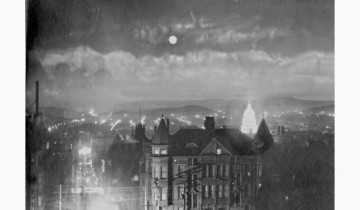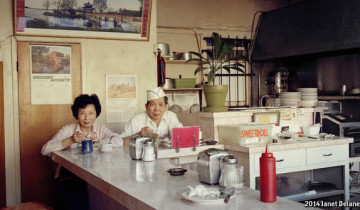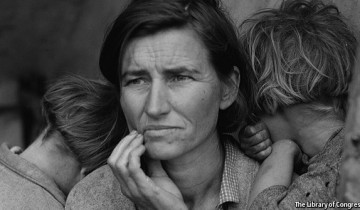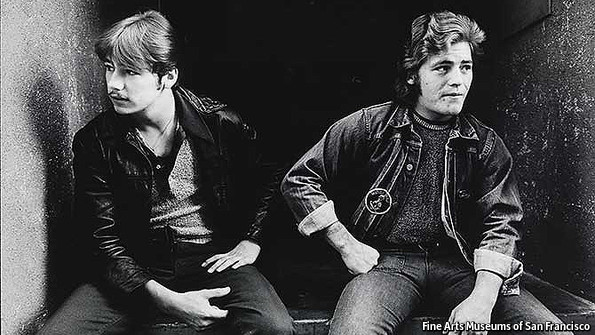 For the ECONOMIST: Photographs of the Middle East regularly make the front pages of newspapers. But photography by contemporary artists from the region is woefully under-represented in Western galleries. An exhibition at the Victoria and Albert museum in London is an attempt to address this imbalance. “Light from the Middle East” is the first major show of contemporary photography by artists from the region which explores ideas of politics, culture and religion from North Africa to Central Asia.
For the ECONOMIST: Photographs of the Middle East regularly make the front pages of newspapers. But photography by contemporary artists from the region is woefully under-represented in Western galleries. An exhibition at the Victoria and Albert museum in London is an attempt to address this imbalance. “Light from the Middle East” is the first major show of contemporary photography by artists from the region which explores ideas of politics, culture and religion from North Africa to Central Asia.
The exhibition is small, but what it lacks in size it makes up for in irreverence. In one self-portrait, Raeda Saadeh lies on her side, wrapped in Palestinian newspapers; she is at once seductive and restrained. In a photograph by Abbas Kowsari, a peshmerga (Kurdish combatant) wears a Bryan Adams rock-concert T-shirt framed by a weapon-belt; there are shots of postcards from pre-civil war Beirut that have been burned to look like war-torn debris.
Marta Weiss, the curator, devised three themes for the exhibition to explore how the photographers approach their work: “recording”, “reframing” and “resisting”. The notion that photos can be framed, or manipulated, in order to deceive runs throughout. Visitors are encouraged to consider how photos—whether art-house fare or gritty reportage—can trick or disorientate. For example, an image of iron filings surrounding a cube-shaped magnet represents pilgrims circling the ka’ba at Mecca during the annual haj. Viewed from a distance, or at a quick glance, it could be mistaken for a photograph of the real thing.
In many of the images social commentary is laced with irony. Shadi Ghadirian’s sepia-toned portraits are inspired by 19th-century photos of members of the Qajar court posing with Western imports, such as clocks, pianos and bicycles. Her photographs depict tableaux of women in burkas holding Pepsi cans or boomboxes. In a larger work, by Sadegh Tirafkan, hundreds of small portraits are arranged to look like a digital Persian rug. Some works challenge Western stereotypes of Muslims and the question of censorship. One series, by Taraneh Hemami, displays mug-shots of Muslims lifted from an American government website with the faces blurred and scratched. In Amirali Ghasemi’s series of carefree images taken at unsanctioned private parties in Tehran in 2005, the faces have been blanked out.
Ms Weiss says the exhibition illustrates a growing self-awareness about the medium of photography in the Middle East. “How susceptible photographs are to manipulation, whether by censors or for propaganda purposes, is evident in much of the photographic practice I see coming out of the Middle East today,” she says. All the photographers featured show an understanding of how photography has been used in the past to convey a message, and a desire to do the same today.
Nermine Hammam’s “Upekkha” series from 2011 is a direct response to the Arab spring, but most of the work in the exhibition was created before the uprisings. According to Ms Weiss, these photographs are not defined by recent events: “Obviously, political upheavals are nothing new to the region. One of the things the works in this exhibition demonstrate is that there was plenty of political critique in contemporary Middle Eastern art before the Arab spring.” This exhibition does not offer any grand conclusions about the uprisings or monolithic statements about the region. But it is a chance to see artists experimenting with the language and techniques of photography and using it to grapple with contemporary Middle Eastern life.
“Light From the Middle East: New Photography” is at the Victoria and Albert Museum in London until April 7th 2013. Image: “Spring” (Sham el Nasseem) from the series “Upekkha” 2011, by Nermine Hammam, courtesy of the V&A Museum.




Hi to every body, it’s my first pay a visit of this webpage;
this blog consists of amazing and in fact excellent stuff designed
for visitors.